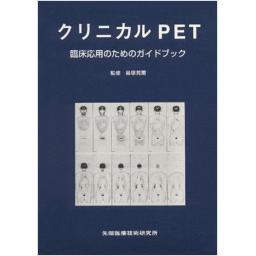3) Kubota K, Matsuzawa T, Ito M, et al. Lung tumor imaging by positron emission tomography using C-11-L-methionine. J Nucl Med 26:37-42, 1985.
4) Kubota K, Yamada S, Ito M, et al. Diagnosis and treatment evaluation of lung cancer. In Ochi H, Konishi J, Yonekura Y, Fukichi M, Nishimura T, Tamaki N (eds), Brain, heart and tumor imaging updated PET and MRI, Amsterdam, Elsevier, 1995, pp. 119-129.
5) 窪田和雄:ポジトロン断層による腫瘍診断 (総説). 核医学 33:207-212, 1996.
6) Kubota K, Matsuzawa T, Fujiwara T, et al. Differential diagnosis of lung tumor with positron emission tomography:a prospective study. J Nucl Med 31:1927-1933, 1990.
7) Miyazawa H, Arai T, Iio M, et al. PET imaging of non-small-cell lung carcinoma with carbon-11-methionine:Relationship between radioactivity uptake and flow-cytometric parameters. J Nucl Med 34:1886-1891, 1993.
12) Leskinen-Kallio S, Huobinen R, Nagren K, et al. [11C]methionine quantitation in cancer PET studies. J Comput Assist Tomogr 16:468-72, 1992.
14) Kim CK, Gupta NC, Chandramouli B, et al. Standardized uptake values of FDG:Body surface area correction is preferable to body weight correction. J Nucl Med 35:164-167, 1994.
15) Langen KJ, Braun U, Kops R, et al. The influence of plasma glucose levels on fluorine-18-fluorodeoxyglucose uptake in brochial carcinomas. J Nucl Med 34:355-359, 1993.
18) Dehaylongsod FG, Lowe VJ, Pats EF, et al. Lung tumor growth correlates with glucose metabolism measured by fluorine-18-fluorodeoxyglucose positron emission tomography. Ann thorac Surg 60:1348-52, 1995.
19) Kubota R, Yamada S, Kubota K, et al:Intratumoral distribution of fluorine-18-fluorodeoxyglucose in vivo:High accumulation in macrophages and granulation tissues studied by microautoradiography. J Nucl Med 33:1972-1980, 1992.
20) Lewis PJ, Salama A. Uptake of fl uorine-18-fluorodeoxyglucose in sarcoidosis. J Nucl Med 35:1647-49, 1994
21) Yamada S, Kubota K, Kubota R, et al.:High accumulation of fluorine-18-fluorodeoxy glucose in turpentine induced inflammatory tissue. J Nucl Med, 36:1301-1306, 1995.
22) Kubota R, Kubota K, Yamada S, et al.:Microautoradiographic study for the differentiation of intratumoral macrophages, granulation tissue and cancer cells by the dynamics of fluorine-18-fluorodeoxyglucose uptake. J Nucl Med 35:104-112, 1994.
23) Okamura T, Kawabe K, Sakamoto K, et al. Differentiation between benign and malignant head and neck tumor using SUV and time SUV curve on FDG-PET. J Nucl Med 37:304 p, 1996.
24) Kubota K, Matsuzawa T, Takahashi T, et al:Rapid and sensitive response of carbon-11-L-methionine tumor uptake to irradiation. J Nucl Med 30:2012-2016, 1989.
25) Kubota K, Ishiwata K, Kubota R, et al:Tracer feasibility for monitoring tumor radiotherapy:a quadruple tracer study with fluorine-18-fluoro deoxyuridine, L-methyl-14C methionine, 6-3H thymidine, and galium-67. J Nucl Med 32:2118-2123, 1991.
29) Lowe VJ, Hebert ME Hawk TC, et al. Chest wall FDG accumulation in serial FDG-PET images in patients being treated for bronchogenic carcinoma. J Nucl Med 35:76 p, 1994.
33) Inoue T, Kim E, Komaki R, et al. Detecting recurrent or residual lung cancer with FDG-PET. J Nucl Med 36:788-793, 1995.
